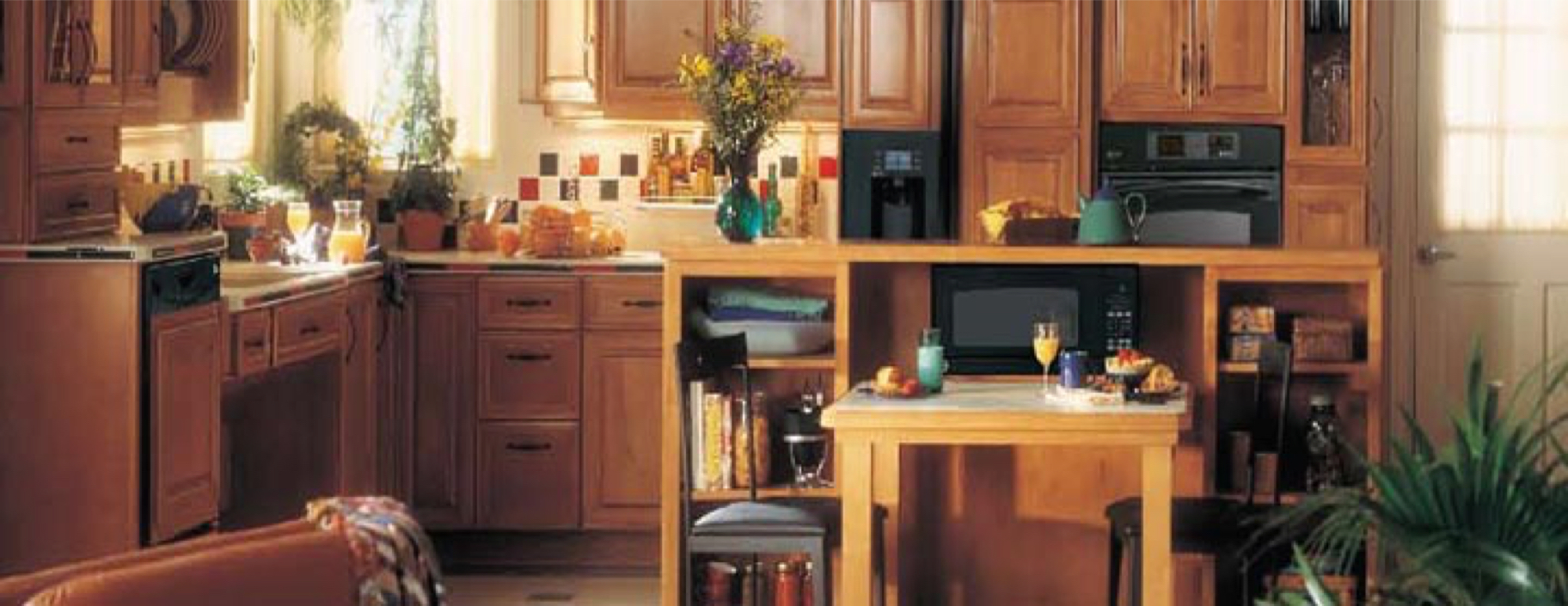
When considering a kitchen remodeling project for your home, you may wish to consider incorporating the principles of Universal Design. If you think these principles need to be applied only if you have someone handicapped in your home, think again. Universal Design meets the needs of all people, with varied abilities. It considers people with age-related issues, people who are tall or short, as well as those with various physical or mental impairments. It also acknowledges that people’s abilities change over time. So you may want to consider using such features as:
- A convenient pull-out counter beneath a built-in single wall oven allows for easy transfer of dishes.
- A 9″ wood kickplate elevates the dishwasher to reduce bending and improve access for the mobility-challenged.
- Swiveling cabinet doors under the cooktop fold out of the way, providing valuable knee space.
- An adjustable-height sink raises and lowers at the push of a button, and is loaded with easy-access features.
- Roll-out shelves make it easier to see and reach items stored in lower cabinets.
- A contrasting tile border aids those with limited eyesight and adds visual appeal.
When designing your remodeling project, keep in mind these design principles adapted from those developed by the Center for Universal Design at North Carolina State University’s College of Design:
Equitable Use: The design is useful and marketable to people with diverse abilities. Is the home or kitchen accessible and appealing to all? Have provisions been made for the safety of family members within the home?
Flexibility in Use: The design accommodates a wide range of individual preferences and abilities. Do appliances allow both right-hand and left-hand use? Do they accommodate people with functional limitations?
Simple and Intuitive: Use of the design is easy to understand, regardless of the user’s experience, knowledge, language skills or current concentration level. Are appliance controls easy to understand and use? Do they provide clear, step-by-step instructions?
Perceptible Information: The design communicates necessary information effectively to the user, regardless of ambient conditions or the user’s sensory abilities. Can people with impaired vision use the appliances? Do the appliances offer visual and/or audible cues for easy operation?
Tolerance for Error: The design minimizes hazards and the adverse consequences of accidental or unintended actions. Do appliances have any safety features, such as child locks?
Low Physical Effort: The design can be used efficiently and comfortably and with a minimum of fatigue. Does use of appliances require much movement? Can the controls be activated with minimal pressure?
Size and Space for Approach and Use: Appropriate size and space are provided for approach, reach, manipulation, and use, regardless of the user’s body size, posture or mobility. Are appliances easily accessible to a person who’s confined to a wheelchair? Would use by a tall person require extreme bending or stooping?
At Cornerstone Builders, our talented designers can help plan your kitchen remodeling or renovation, bath remodeling or general remodeling project to suit any of your family’s needs. Please call us today.

